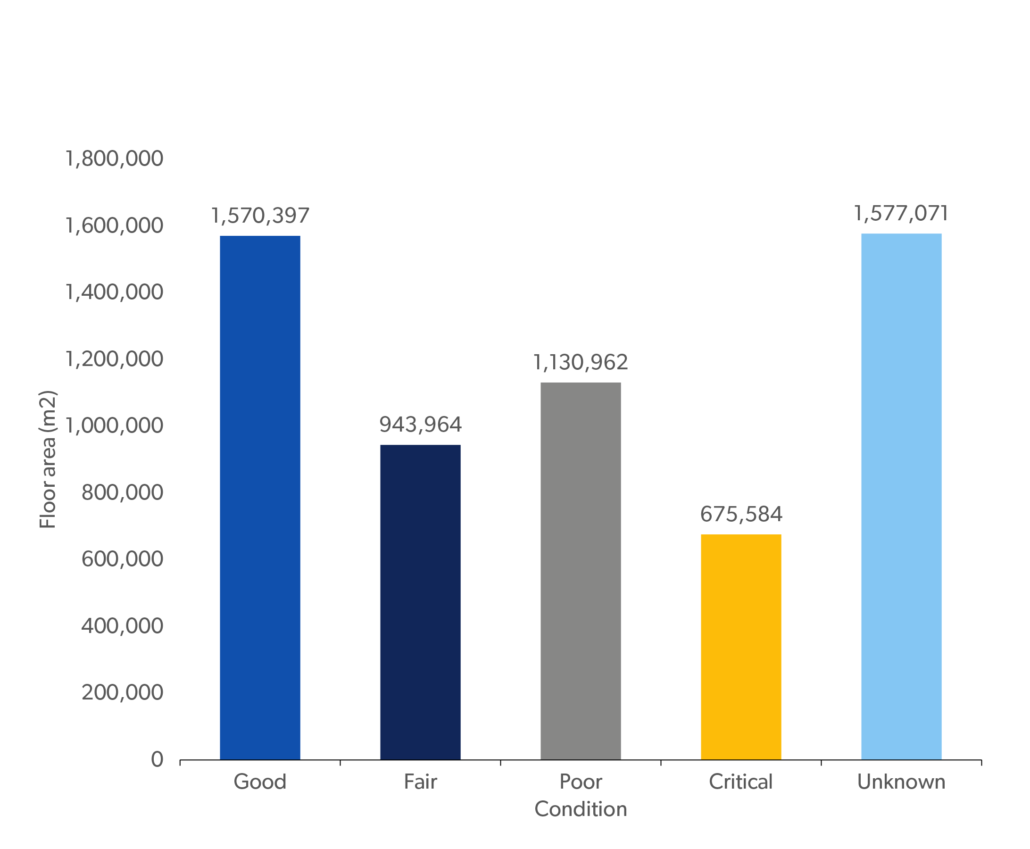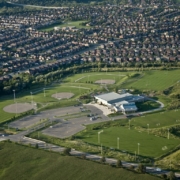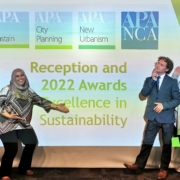How Industrializing Retrofits Can Decarbonize Canada’s Buildings
Old, leaky buildings are a climate problem. And, for organizations with large building portfolios, this challenge is paramount to reducing emissions. Luckily, industrialization and mass customization can take energy efficiency retrofits to scale.
In fact, this process could be a pivotal opportunity for the Government of Canada’s corporate building stock in the National Capital Region. In a study titled Roadmap to Low-Carbon Operations in the National Capital Region, SSG, Rocky Mountain Institute, and whatIf? Technologies explored the potential of this new approach to enable the federal government to decarbonize all its floorspace by 2050.
The Problem With Custom Retrofits
According to the United Nations Environment Programme, buildings and construction account for 36 percent of final energy use and 39 percent of process and energy-related carbon dioxide emissions. Building retrofits, therefore, represent a pivotal opportunity for emissions reductions to limit warming to 1.5°C. Despite some technological gains in new construction, the net emissions impact from buildings has been on the rise since 1990 and less than 1 percent of buildings globally are retrofitted each year.
The wide variety of buildings with different construction types, end uses, and heating and cooling systems is a key barrier to scaling up building retrofits. One-off retrofits, which are the norm in the building retrofit market, do not capture economies of scale. Each retrofit is treated like a snowflake and costs quickly add up. For large organizations, another barrier to deep energy retrofits is the disruption to daily operations, which can take up to five years to implement per building.
These are core challenges for the Government of Canada, which has pledged to reduce its corporate emissions by 80 percent by 2050. Sixty percent of carbon dioxide emissions from federal government operations in the National Capital Region are generated by natural gas heating in the 2,250 buildings the government owns and leases. Almost half were built between 1940 and 1980, and nearly 50 percent of the floor area is currently classified as in poor or critical condition.
Federal buildings, by condition and floor area. Source: Directory of Federal Real Property. (Designer: Naomi Devine/SSG)
The condition of the existing building stock and the pledge to reduce carbon emissions provide the federal government with a unique opportunity to upgrade critical building infrastructure while reducing emissions over the next few decades.
A Mass, Customized Industrialized Solution
The Government of Canada has 2,250-plus federally owned and leased buildings in Ottawa-Gatineau, which are managed by over 33 departments, agencies, or crown corporations. When retrofits are occurring at scale, finding enough swing space for all affected employees is a make-or-break consideration.
Industrialized retrofits, an approach pioneered in the Netherlands, can help solve the challenge by bringing retrofits to scale. In an industrialized approach, buildings can be aggregated across the portfolio into groups based on similar component upgrades, like windows, walls, roof, heat pumps, lighting, and controls, over a set period of time to increase the speed and scale of retrofits.
In the process, the portfolio owner can access bulk pricing to reduce costs. The industrialized process can also alleviate swing space pressures because several elements of the phased approach can occur while tenants are still occupying the building. This cuts down the length of time a building will need to be vacant during the retrofit, which, in turn, reduces how much swing space is needed.
In our recommendations to the Government of Canada, we applied the portfolio approach while addressing the uniqueness of each building. We call it a “mass customized approach.” By assessing the end use type, existing heating and cooling system, and the age of building components being replaced, we grouped buildings in a way that ensures their unique needs and features are considered throughout the upgrades.
Savings From Industrialization and Decarbonization Over Time
Bundling buildings across the entire portfolio not only increases the speed with which retrofits are carried out, but also enables access to bulk pricing. This can reduce the Government of Canada’s costs by up to 25 percent, according to regional cost projections. This approach can be designed to target specific retrofit measures, such as envelope and windows, HVAC system upgrades, plug loads and lighting, and space modernization fit-up.
Furthermore, using planned building upgrades as triggers for deep energy retrofit packages can minimize the cost of deep energy retrofits while greening the federal government building portfolio over time. Using an industrialized and zero-over-time approach in our recommendations to the federal government, we project that the additional cost of maximizing emissions reductions adds $1.3 billion to the $4.04 billion price tag of expected energy-related upgrades between 2020 to 2050. This is a 24 percent premium on the total energy-related retrofit costs, or a premium of less than 5 percent over the cost to upgrade all federal government buildings in the National Capital Region over the next 30 years.
Furthermore, by including space fit-ups into the industrialized process, the final space can accommodate more employees per area. Over time, this means the amount of floor space needed by the Government of Canada can decline considerably, resulting in significant operating cost reductions.
Perhaps most importantly, business-as-usual planning for building emissions is no longer an option. We have less than a decade left to limit global warming to 1.5°C. Buildings must be transformed en masse to create a low-carbon future. It’s a large-scale problem that demands a mass-customized, industrialized solution.
For more insights on how to build a carbon-free future, sign up for the monthly SSG Newswire and updates from the Rocky Mountain Institute’s Carbon-Free Buildings Team.
_
Lauren Malo has worked on energy and emissions plans across Canada and was a lead analyst for the Roadmap for Low-Carbon Operations in the National Capital Region. She is a former Consultant at SSG.
Sheldon Mendonca is a Manager with Rocky Mountain Institute’s buildings practice, where he leads projects with the Portfolio Energy Optimization initiative. Sheldon manages work with building portfolio owners across multiple sectors including federal and city governments, real-estate owners and large corporations. He has in-depth experience in net-zero carbon roadmap planning and deep energy retrofits in the commercial and multi-family building sectors.












